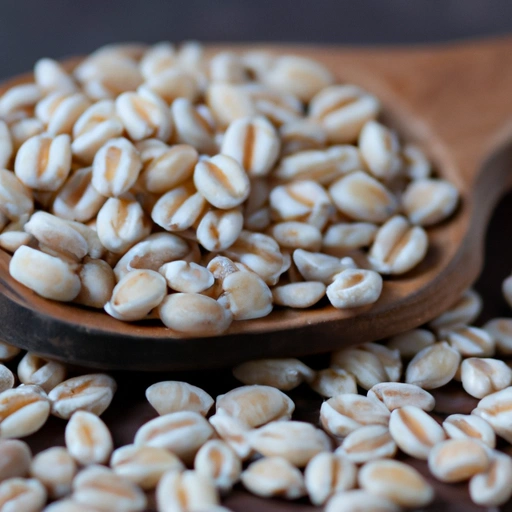Pearl Barley
Description

Pearl barley is a barley grain that has been processed to remove its fibrous outer hull and polished to remove some or all of the bran layer. This process gives the grain its characteristic pearls-like appearance, hence the name. Pearl barley is a versatile ingredient that can be used in a variety of dishes, offering a chewy texture and a slightly nutty flavor. It is a great addition to soups, stews, salads, and side dishes. It can be measured in various units, including ounces (oz), grams (g), cups (US and metric), and milliliters (ml), making it a convenient ingredient for both American and European recipes.
Common uses
Pearl barley is commonly used as a base for pilafs, a thickening agent in soups and stews, and a hearty addition to salads. It's also an excellent substitute for rice or pasta in various dishes.
Nutritional value
Calories
A 100-gram serving of cooked pearl barley contains approximately 123 calories (514 kilojoules).
Protein
This same serving size offers about 2.26 grams of protein.
Fat
Pearl barley is low in fat, with only 0.44 grams per 100 grams.
Carbohydrates
It is predominantly composed of carbohydrates, providing about 28.22 grams.
Vitamins
Pearl barley is a good source of various B vitamins, particularly niacin (B3).
Minerals
It contains essential minerals such as magnesium, phosphorus, and manganese.
Health benefits
Pearl barley can support digestive health due to its dietary fiber content. It may also help control blood sugar levels and contribute to heart health through its beta-glucan content.
Potential risks
As with any grain, pearl barley should be consumed in moderation. Those with gluten intolerance or celiac disease should avoid it, as barley contains gluten.
Common recipes
Popular recipes include barley soup, risotto-style barley, and barley pilaf. It's also found in traditional European dishes such as Russian kasha and Italian orzotto.
Cooking methods
Pearl barley can be boiled, simmered, or slow-cooked. It generally requires about 25 minutes of cooking time when pre-soaked or up to an hour if not.
Pairing with other ingredients
It pairs well with robust flavors like mushrooms, root vegetables, and hearty meats. Fresh herbs and spices also complement its nutty taste.
Summary
Pearl barley is a nutritious, versatile grain enjoyed around the world. With its rich historical background and variety of uses in both traditional and modern dishes, it's an excellent ingredient to have on hand. Pearl barley's health benefits make it a great addition to a balanced diet, and it can be easily adapted using both metric and imperial measurements in diverse recipes.